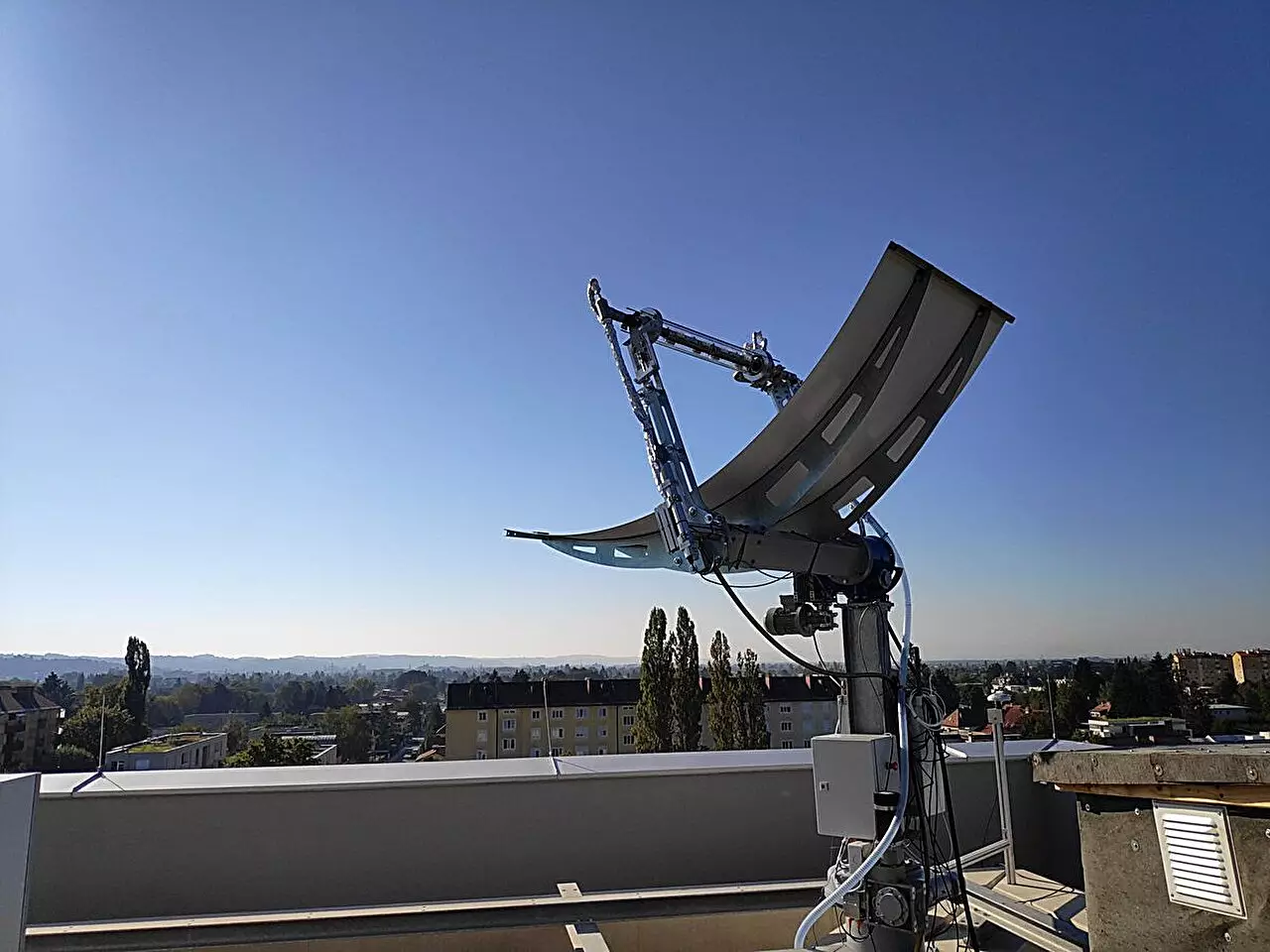Generating both electricity and thermal energy from solar radiation has long been a goal in the field of renewable energy. Thanks to recent technological innovations, this dream is closer to becoming a reality. A team led by Armin Buchroithner from the Institute of Electrical Measurement and Sensor Systems at Graz University of Technology (TU Graz) has developed a cutting-edge parabolic trough collector that combines cost-effective photovoltaic cells with thermal energy generation capabilities.
The solar module created by Buchroithner’s team features a trough-shaped concave mirror that concentrates the sun’s rays onto the photovoltaic cells aligned along the focal line. As the solar cells absorb sunlight, any excess heat is transferred to a heat transfer fluid circulating behind the cells through a network of pipes. This innovative system allows for the simultaneous generation of electrical and thermal energy, opening up a wide range of applications in both residential and industrial settings.
One of the main obstacles to dual-energy generation from solar radiation has been the high costs and technological hurdles associated with the process. However, through the ECOSun project, Buchroithner’s team has managed to overcome these challenges. By partnering with IMK Solarmirrotec, the researchers were able to improve the manufacturing process of parabolic trough collectors using advanced techniques like injection molding. Additionally, the collaboration with the Turkish research center GÜNAM resulted in the development of cost-effective and durable silicon solar cells capable of withstanding the intense heat generated by concentrated sunlight.
The implications of these advancements in concentrator photovoltaic cells are vast. Not only can this technology contribute to the global shift towards renewable energy sources, but it also has the potential to revolutionize energy production in regions previously deemed unsuitable for solar power generation. While traditional parabolic trough solar power plants are mainly found in sun-drenched areas like Spain or the Persian Gulf, Buchroithner’s team has demonstrated that these systems can be effective in more temperate climates, such as Austria. By reducing reliance on fossil fuels in industrial processes, these innovative solar power solutions have the power to shape the future of energy production worldwide.
The development of cost-effective, efficient, and versatile concentrating photovoltaic cells represents a significant step forward in sustainable energy generation. Through continuous innovation and collaboration, researchers like Armin Buchroithner are paving the way for a cleaner, more sustainable future powered by the sun’s abundant energy.


Leave a Reply